
-
Status reports

-
Last news
 (November 10, 1997)
(November 10, 1997) - Cassini Mission Home Page
- CNN interactive
- Build Your Own Cassini Model!
- A Detailed 1/37 Scale Model of the Cassini Spacecraft
That You Can Download and Build
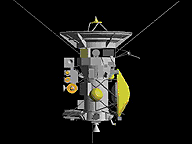

|
 |
|
|
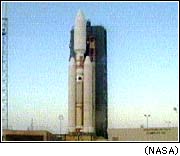
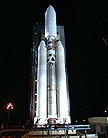
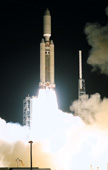
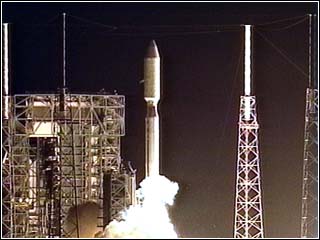 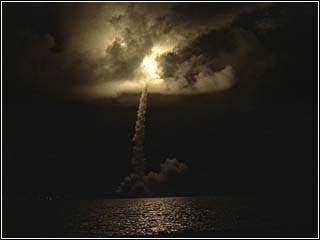 October 15, 1997 |
After a two-day delay due to weather problems and technical glitches, there were no delays in the second attempt. The launch went off as scheduled Wednesday, at 4:43 a.m. EDT (0843 GMT).
Cassini will again pass by Earth in 1999, on the way to a 2004 rendezvous with Saturn. If all goes as planned, it will orbit Saturn and its moons for four years and deposit the European Space Agency's Huygens probe on the surface of Titan, Saturn's largest moon.
Cassini is the largest, most expensive interplanetary probe in NASA's history. Its $3.4 billion, 11-year mission was planned before NASA's recent commitment to "faster, better, cheaper" missions like Mars Pathfinder and Mars Global Surveyor. Cassini will be the first spacecraft to visit Saturn since the Voyager 2 probe in the early 1980s.
The Cassini orbiter is a do-everything machine, with 18 on-board experiments and the Titan probe. Scientists are interested in Titan because they believe its conditions are similar to the conditions that preceded the development of life on Earth.
(Photo NASA)
From CNN
Interactive
October 15, 1997
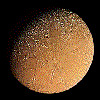 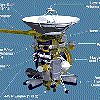 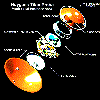 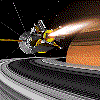 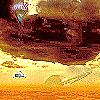 |
Cassini is an international mission
being conducted by NASA, the European Space Agency (ESA) and the Italian
Space Agency (ASI). Its main goals focus on Saturn,
its magnetic environment, the rings, Titan
and the icy moons Enceladus, Mimas and Japetus.
Mimas, with the enormous crater Hershell
on one side, has an appearance reminiscent of the Death Star in
the movie Star Wars.
Roughly two stories tall and weighing more than six tons, Cassini is one of the largest interplanetary spacecrafts ever launched. Following its spectacular launch into the moonlit sky above Cape Canaveral, FL, at 4:43 a.m. EDT (1:43 a.m. PDT) on Oct. 15, the Cassini spacecraft continues to operate nominally. It will enter orbit around Saturn on July 10, 2004. The computer simulated picture shows this critical phase of the mission, when the spacecraft fires its main engine to slow down. On approach to Titan, Cassini will release the Huygens probe on Dec. 5, 2004. The probe has a diameter of 2.7 meters and a mass of nearly 350 kg. Science data are continuously being transmitted by the probe to the orbiter during the probe's 2.5-hr descent to the surface, for later relay to Earth. If the probe survives its impact of about 15 mi/hr, a small science package may transmit up to 30 minutes of post-impact science data to the orbiter.The Cassini orbiter carries 12 science instruments and the Huygens probe has six. |
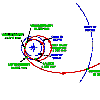 |
The first graphic depicts the planned interplanetary
flight path: VVEJGA (Venus-Venus-Earth-Jupiter Gravity Assist)
trajectory, with flybys of Venus (30 April 1998 and 29 June 1999), Earth
(25 August 1999), and Jupiter (8 January 2001). During these planetary
flybys, there is an exchange of energy between the planet and the spacecraft
which accelerates the latter and changes its velocity direction relative
to the Sun.
|
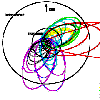 |
The second graphic depicts one possible orbital
tour for the Cassini mission. The final four year tour has yet to be finalized
and could look different from this one. The view is from Saturn's north
pole and the direction to the Sun is towards the top of the figure. The
orbits of two satellites are shown; Titan and Iapetus orbit at distances
of ~20 and ~60 Saturn radii, respectively. This sample tour contains 69
orbits about Saturn, approximately 40 Titan flybys.
|
